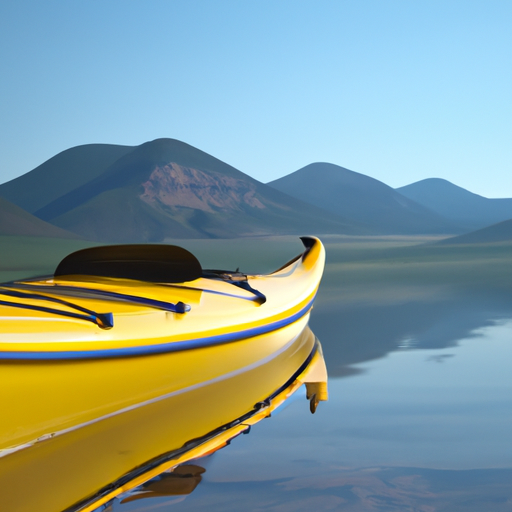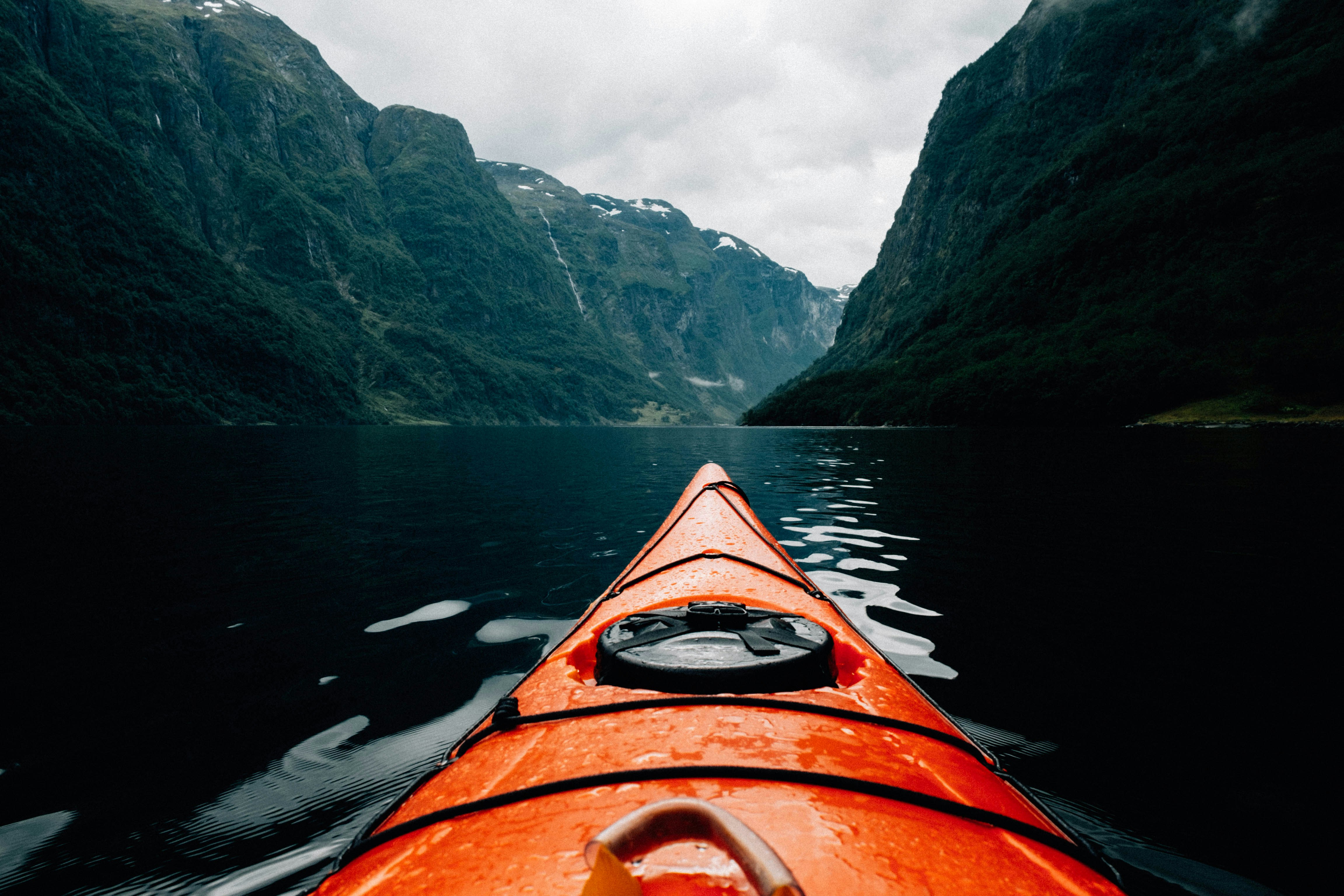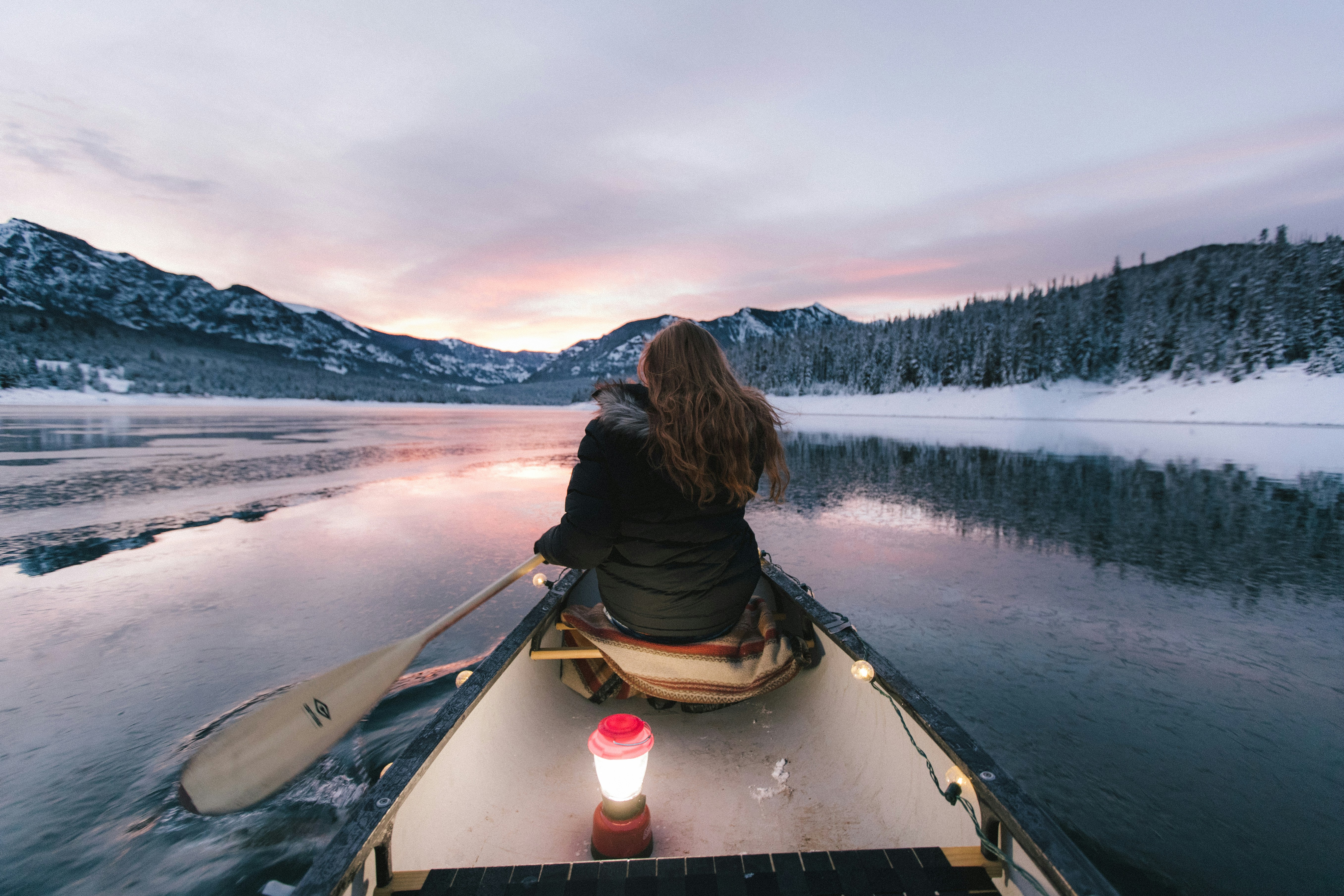Are you an avid kayaker looking to improve your stability on the water? If so, you may be wondering what the ideal conditions are for using kayak stabilizers. Whether you’re a beginner or an experienced paddler, having the right conditions can make a significant difference in your kayaking experience. In this article, we will explore the key factors to consider when using kayak stabilizers, from the weather conditions to the type of water you’ll be navigating. So grab your paddle and let’s dive into this exciting topic!

Introduction
When it comes to kayaking, the ideal conditions can vary depending on various factors such as water conditions, wind conditions, weather conditions, kayak type and size, experience level, weight and load distribution, distance and duration, purpose of kayaking, as well as personal preferences. In this comprehensive article, we will explore each of these factors in detail, providing you with a thorough understanding of the ideal conditions for kayak stabilizer use.
Water Conditions
Flat water
Flat water conditions are optimal for beginners and recreational kayakers. It refers to calm, still, and undisturbed water surfaces such as lakes, ponds, and slow-moving rivers. Paddling in flat water provides a sense of tranquility and allows for easier maneuverability and stability. Kayak stabilizers may not be necessary in these conditions, as the water remains calm and predictable.
Slight current
Slightly moving water, also known as a slight current, can add a bit of challenge and excitement to your kayaking experience. It is ideal for intermediate paddlers who want to enhance their skills and explore rivers with gentle currents. With proper paddling techniques, kayak stabilizers may not be needed in these conditions. However, it is always important to prioritize safety and wear a personal flotation device.
Moderate waves
For those seeking a bit of adventure and thrill, moderate waves can provide an exhilarating kayaking experience. These waves occur in open waters such as the ocean or large lakes and are typically caused by wind or boat traffic. In these conditions, kayak stabilizers can help maintain stability and prevent the kayak from tipping over. It is important to choose stabilizers designed for rougher waters to ensure optimal performance.
Rough waters
Rough waters, characterized by large waves and strong currents, are best left for experienced kayakers. These conditions are often found in whitewater rivers or coastal regions with high winds and turbulent waves. Kayak stabilizers are highly recommended in rough waters, as they provide additional stability and help prevent capsizing. It is crucial to have proper training, experience, and the right equipment when venturing into rough waters.
Wind Conditions
Calm winds
Calm wind conditions refer to minimal or no wind, making it the ideal situation for kayaking. Paddling in calm winds allows for a smooth and enjoyable experience, as there are no external forces affecting your kayak’s stability. In such conditions, kayak stabilizers may not be necessary, as your kayak will naturally maintain its balance on still waters. However, it is always advisable to keep an eye on weather forecasts, as wind conditions can change quickly.
Light winds
Kayaking in light winds brings a gentle breeze and adds a serene touch to your adventure. These conditions are suitable for recreational kayaking and allow for comfortable paddling. Depending on your experience level, kayak stabilizers may or may not be needed in light winds. It is important to consider the strength and direction of the wind, as it can influence your kayak’s stability.
Moderate winds
Moderate winds can pose a slight challenge to kayakers, especially if they are paddling against the wind. These conditions require paddlers to exert more effort and maintain proper technique to keep the kayak steady. Kayak stabilizers can be beneficial in moderate winds, as they help counterbalance the force of the wind and maintain stability, allowing you to paddle with ease.
Strong winds
Strong winds can make kayaking a challenging and demanding activity. It is crucial to exercise caution and prioritize safety when kayaking in strong winds. The force of the wind can cause your kayak to drift or tip over, increasing the risk of accident or injury. In such conditions, kayak stabilizers are highly recommended to provide additional stability and improve control over your kayak.
Weather Conditions
Clear skies
Clear skies are generally favorable for kayaking as they provide optimal visibility and pleasant conditions. The absence of clouds allows for an unobstructed view of the surroundings, enhancing your overall kayaking experience. Kayak stabilizers may not be necessary in clear skies, as long as the water and wind conditions remain favorable. Remember to wear sun protection, such as a hat and sunscreen, to safeguard against harmful UV rays.
Partly cloudy
Partly cloudy weather can create a beautiful atmosphere for kayaking. The mix of sunshine and clouds can provide a refreshing and comfortable environment on the water. Kayak stabilizers may not be needed in partly cloudy conditions, as long as the water and wind conditions remain manageable. However, it is essential to stay aware of any changes in the weather pattern, as the clouds can quickly turn into stormy conditions.
Overcast
Overcast weather conditions can bring a moody and serene ambiance to your kayaking journey. Although the absence of direct sunlight might affect visibility, it can also create a unique and peaceful atmosphere on the water. In overcast conditions, kayak stabilizers can help maintain stability in case of unexpected wind shifts or rough waters. Always monitor the weather closely and be prepared for changing conditions.
Rainy or stormy
Kayaking in rainy or stormy weather is generally not recommended, especially if there are thunderstorms or strong winds. Rains can create slippery conditions, reduce visibility, and increase the risk of hypothermia. Stormy weather can also lead to unpredictable water and wind conditions, posing significant hazards for kayakers. It is crucial to prioritize safety and avoid kayaking in these conditions unless you have proper training and experience in rough weather.
Kayak Type and Size
Sit-on-top kayaks
Sit-on-top kayaks are popular for recreational kayaking, as they provide easy entry and exit. These kayaks have an open deck, allowing paddlers to sit on top rather than being enclosed inside the hull. Sit-on-top kayaks are generally stable and suitable for beginners, as they offer a greater sense of security and visibility. Depending on the specific model and design, kayak stabilizers may or may not be necessary for sit-on-top kayaks.
Touring kayaks
Touring kayaks are designed for longer trips and are often used for exploring lakes, rivers, and coastal areas. These kayaks offer better tracking and efficiency, allowing for smoother and faster paddling. With their sleek design, touring kayaks tend to be more stable in calm waters and moderate conditions. However, in rougher waters or high winds, kayak stabilizers can help enhance stability and control.
Fishing kayaks
Fishing kayaks are designed to provide stability and comfort for anglers. These kayaks are typically wider and more stable to accommodate standing, casting, and reeling in fish. Stability is an essential factor in fishing kayaks, as anglers often need to lean and shift their weight. While kayak stabilizers may not be necessary for calm water fishing, they can provide added stability when facing rougher water conditions.
Whitewater kayaks
Whitewater kayaks are specifically designed for navigating fast-moving rivers and dealing with challenging whitewater conditions. These kayaks are shorter and more maneuverable, allowing paddlers to perform tricks and navigate through rapids. In whitewater kayaking, stability is typically achieved through the paddler’s skill and technique rather than relying on stabilizers. It is important to have advanced kayaking skills and experience before venturing into whitewater, as it can be extremely demanding and potentially dangerous.
Experience Level
Beginners
Beginners often start with recreational kayaking in calm waters, gradually building their skills and confidence. For beginners, calm water conditions and gentle currents are ideal as they provide a stable and comfortable environment for learning. In these conditions, kayak stabilizers may not be necessary, but it is important to wear a personal flotation device and practice proper paddling techniques.
Intermediate
Intermediate kayakers have gained some experience and are comfortable paddling in a variety of conditions. They can handle slightly stronger currents, moderate waves, and light winds. Intermediate kayakers may choose to use kayak stabilizers in certain situations, such as when facing challenging wind or wave conditions. It is essential to continue learning and improving skills to safely navigate more demanding environments.
Advanced
Advanced kayakers have honed their skills and are experienced in handling various water and weather conditions. They can confidently navigate rough waters, strong winds, and challenging whitewater rapids. Advanced kayakers typically do not rely on stabilizers, as their skill and technique allow them to maintain stability and control their kayaks. They prioritize safety and constantly push their limits while exploring more advanced kayaking opportunities.
Weight and Load Distribution
Lightweight paddlers
Lightweight paddlers may find it easier to maintain stability in their kayaks, as their weight does not put as much strain on the kayak’s balance. In general, kayak stabilizers may not be necessary for lightweight paddlers in most water conditions. However, it is crucial to ensure proper paddling technique, weight distribution, and balance to maximize stability and control.
Heavier paddlers
Heavier paddlers may experience more challenges in maintaining stability, especially in kayaks with lower weight capacities. In these cases, kayak stabilizers can be beneficial in providing additional support and balance. It is important to choose stabilizers that are designed to handle heavier weight loads and ensure proper installation and adjustment to maintain optimal stability.
Even load distribution
Even load distribution refers to distributing the weight evenly across the kayak. This evenly distributed weight helps maintain stability and balance. When the load is evenly spread, the kayak is less likely to tilt or become unstable. Proper packing techniques and securing gear can contribute to even load distribution, reducing the need for stabilizers.
Uneven load distribution
Uneven load distribution occurs when weight is concentrated more on one side of the kayak, causing an imbalance. This imbalance can make the kayak unstable and affect its maneuverability. In situations where there is an uneven load distribution, kayak stabilizers can help counteract the imbalance and provide better stability. However, it is important to address the root cause of the uneven load distribution and adjust the positioning of the gear accordingly.
Distance and Duration
Short trips
Short trips refer to kayaking excursions with a relatively low distance and duration. These trips can range from a few hours to half a day. For short trips, kayak stabilizers may not be necessary, especially if the water and weather conditions are favorable. It is important to ensure proper paddling technique, wear appropriate attire, and carry essential safety equipment.
Day trips
Day trips involve kayaking for a full day, covering a significant distance and duration. In day trips, kayak stabilizers may not be required for experienced kayakers if they are paddling in expected water conditions. However, for less experienced paddlers or when facing unpredictable water or weather conditions, using stabilizers can provide an added layer of stability and safety.
Multi-day expeditions
Multi-day expeditions involve paddling for several consecutive days, covering significant distances and durations. These trips often require carrying camping gear, food, and water. In multi-day expeditions, kayak stabilizers can be beneficial, especially when faced with rough waters or challenging weather conditions. The additional stability provided by stabilizers can help reduce fatigue and enhance comfort during extended periods on the water.
Purpose of Kayaking
Recreational kayaking
Recreational kayaking focuses on the joy and relaxation of being on the water. It is usually done in calm waters, allowing paddlers to enjoy nature at a leisurely pace. For recreational kayaking, kayak stabilizers may not be needed, as the calm water conditions provide sufficient stability. The priority in recreational kayaking is personal enjoyment and the opportunity to connect with nature and explore serene landscapes.
Fishing
Kayak fishing is a popular activity that combines the thrill of angling with the tranquility of kayaking. Stability is crucial in fishing kayaks, as anglers need to cast their lines, reel in fish, and occasionally stand to gain better visibility. Kayak stabilizers can greatly enhance stability, allowing anglers to focus on fishing rather than worrying about balance. They provide a solid platform for casting, fighting fish, and maneuvering in various water conditions.
Touring
Kayak touring involves exploring different water bodies over extended distances. It allows paddlers to discover new areas and experience the beauty of nature. For touring kayaks, stabilizers may not be necessary, as these kayaks are designed for efficient and stable paddling. However, in situations where the water is rough or windy, kayak stabilizers can help maintain stability and reduce fatigue during long-distance journeys.
Whitewater kayaking
Whitewater kayaking is an exhilarating and challenging activity that involves navigating fast-moving rivers and turbulent rapids. Kayak stabilizers are typically not used in whitewater kayaking, as they can hinder maneuverability and limit the paddler’s ability to perform tricks or roll the kayak. Instead, whitewater kayakers rely on their skill, technique, and experience to maintain stability and navigate through challenging water features.
Personal Preferences
Comfort
For many kayakers, comfort is a top priority. A comfortable kayaking experience allows paddlers to fully enjoy their time on the water. Depending on the individual’s preference, kayak stabilizers can provide added comfort and peace of mind by maintaining stability and reducing the risk of capsizing. It is important to choose stabilizers that are ergonomic, easy to adjust, and designed for the specific kayak model.
Maneuverability
Maneuverability refers to the kayak’s ability to turn, pivot, and change direction quickly. Some kayakers prioritize maneuverability over stability, especially those who enjoy whitewater or performance paddling. In such cases, kayak stabilizers may not be desired, as they can affect the kayak’s agility and responsiveness. It is crucial to understand the trade-off between stability and maneuverability and choose the appropriate equipment based on the desired kayaking style.
Speed
Speed enthusiasts often prioritize a fast and efficient paddling experience. Kayak stabilizers can potentially create drag and reduce speed, especially in high-performance kayaks. However, for most recreational and touring kayakers, the impact of stabilizers on speed is minimal. If speed is a top priority, it is advisable to choose lightweight stabilizers specifically designed for maintaining stability without compromising agility or speed.
In conclusion, the ideal conditions for kayak stabilizer use vary based on factors such as water conditions, wind conditions, weather conditions, kayak type and size, experience level, weight and load distribution, distance and duration, purpose of kayaking, as well as personal preferences. It is important to assess these factors and make informed decisions about using kayak stabilizers to ensure a safe, enjoyable, and stable kayaking experience. Remember to always prioritize safety, wear appropriate safety gear, and follow best practices for kayaking in any given conditions.


